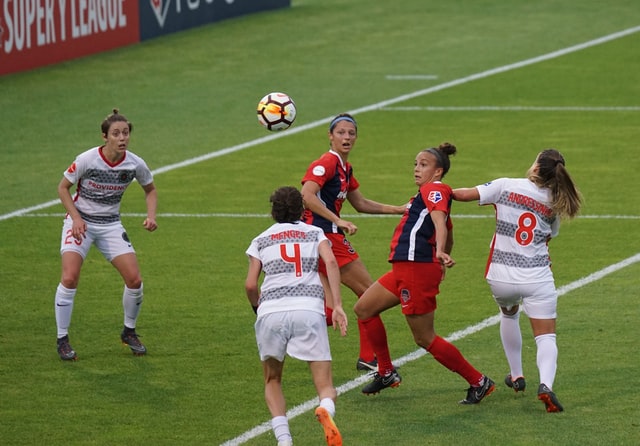It was my birthday recently, and I went to the Women’s Euros at the Amex Stadium (Brighton and Hove Albion’s ground) to watch England v Norway.
All was going well. Beautiful weather. A noisy, mixed crowd. Not too much delay on the train up to Falmer. Good seats behind the goal. Almost a sell-out. A great pie. Even banners quite rightly reminding us that this isn’t ‘women’s football’ – it’s ‘football played by women’.
And then the teams lined up on the pitch for the national anthems. Hang on, England is an all-white team …. That can’t be right? Where are the black players? I know that this isn’t the men’s team, but NO black players?? To me this stood out like a sore thumb, and it matters.
Both teams took the knee, which I wholly support. I know that Gareth Southgate has said that this action is about players showing support for the fight against racism and campaigning for meaningful change in football, but I wondered what seeing that action felt like for all the different members of the England team on Monday evening – both those on the pitch and those in the dugout, three of whom were black. And what did it feel like for the family sitting behind me, with two mixed-race kids? And for the ethnically mixed groups of young people who’d so enthusiastically shown up to support their country?
At half-time I checked out the full England team, and yes there were three black players on the bench. There’s still time, I thought. Well, England went on to make 5 changes, which left the three black players and one other white player without a game. I know there are a whole range of reasons for making substitutions, and in no way am I advocating tokenism, but could there have been room for some flexibility, particularly as England were 6 – 0 up at the mid-point? This wouldn’t have denied ‘merit’ but would have balanced it with ‘opportunity’ – the opportunity for players of colour to showcase their skill in the biggest football tournament played by women.
Well, as you may know England put on an impressive performance on the night and went on to win 8 – 0 – so all good there. When I got home, I researched representation of players of colour in the women’s team, and I learned that in recent years this has fallen because of decisions which moved training grounds and centres of excellence out of inner-city areas, initially with no financial or other support to enable young black women to continue playing. There’s also a lack of visible role models and black facilitators in the women’s game. I learned too that the FA has a Strategy for Women’s and Girl’s Football, which contains a whole raft of stretching targets, including race targets. This Strategy covers 2020 – 2024, so we’re two years in now, and I’m really hoping that those goals will be achieved.
But what are my wider reflections from my experience? Firstly, how striking it is when you actually see a blatant lack of diversity in front of you, and how so often this can be hidden in organisational demographic data and diversity monitoring reports that fail to make the light of day, let alone drive meaningful reflection and action.
Secondly, the importance of thinking carefully about the implications of key strategic decisions for different groups, before those decisions are made. In this case it was about the implications for minoritised inner-city girls and young women, and perhaps a robust equality impact assessment process would have helped to flag the potential outcomes here?
Thirdly, how critical it is to have a wide diversity of voices not only sharing experiences of inclusion and exclusion, but also contributing to those key strategic decisions. Marshalls has recently produced a Whitepaper bringing to life the importance of Board Diversity, which is fascinating reading.
And finally, the importance of opportunity. Opportunity to be seen and to shine alongside others – something which is in the gift of leaders to facilitate and support.
Don’t get me wrong, England have played brilliantly so far in the Women’s Euros. The quality of the football is inspiring, and I really hope that they will go on to raise the trophy. By the time you read this, maybe they will even have been crowned champions. I know that issues of accessibility, inclusion and representation are complex, and that change takes a while to filter through – in sport, from grassroots to elite. Huge progress has been made in terms of participation in football for girls and women, and in terms of recognition and popularity of the game across a wide audience. But let’s make sure that progress and real opportunity touch everyone, not just in football but in all sectors and organisations.
About the author: Ann Allcock is Head of Diversity at Marshalls E-Learning Consultancy, a specialist diversity and inclusion e-learning and training provider, where she leads on facilitated EDI training and wider consultancy within HE and across other sectors. You can see details of our Let’s Talk about Race e-learning module here. Please get in touch if you would like a complimentary viewing of this or our other courses, including our Equality Impact Assessment module.
At Marshalls Ann advises clients on diversity and inclusion strategy and actions, creates bespoke learning resources, and facilitates workshops to enhance employee knowledge and understanding of diversity and inclusion, enabling everyone to play their part in creating workplaces where all can thrive.
Ann enjoys living in Brighton and Hove. She is a keen runner, and on sunny, calm days is a sea swimmer.
@MarshallACM
